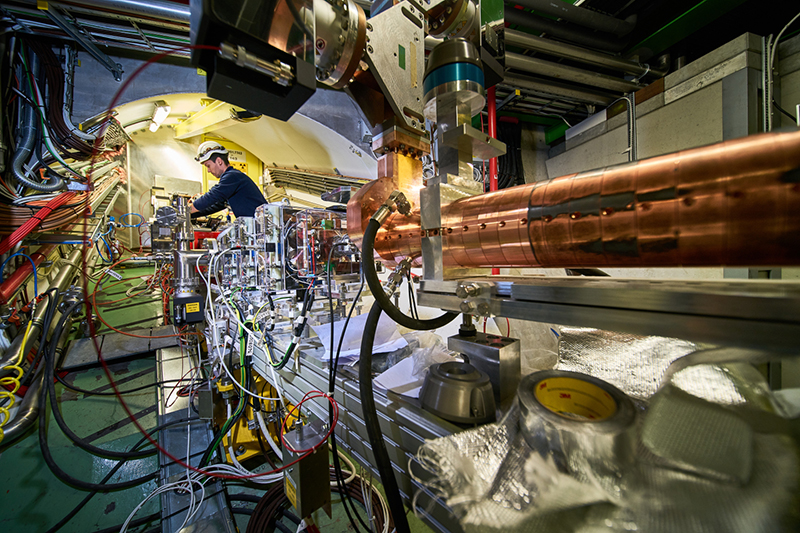For the first time, researchers have successfully accelerated electrons in a wave of plasma driven by protons. The breakthrough points to a way of constructing smaller, thriftier particle accelerators in the future. See also: Electron; Particle accelerator; Plasma (physics); Proton
Particle accelerators have long served as one of physicists' foremost tools for probing the laws of nature, leading to discoveries including quarks, the Higgs boson, and other elementary particles. Yet cost and scale are becoming prohibitive for building new, conventional kinds of accelerators. Particle physicists are therefore eager for alternative approaches that will deliver the ever-higher collision energies necessary for pushing past the current limits of knowledge, delineated by the so-called standard model. See also: Elementary particle; Energy; Fundamental interactions; Higgs boson; Physics; Quark; Standard model

In a recent study, a research team based at the European Organization for Nuclear Research (CERN, in the French version of the acronym) enabled an electron to "surf" a wave generated in plasma, or ionized gas, by a beam of high-energy protons. The protons plowed through a "sea" of the element rubidium, ionized by a laser, leaving behind a wake similar to that formed in water by a speeding boat. Using these plasma waves, also known as wakefields, for particle acceleration is an idea that scientists have explored for more than four decades. The new test finally succeeded, though, because it had access to the high-energy beam of protons shot into the world's most powerful particle accelerator, the Large Hadron Collider, also housed at CERN. See also: Large Hadron Collider (LHC); Laser; Rubidium
The instrument that carried out the successful test is called the Advanced Proton Driven Plasma WAKEfield Acceleration Experiment (AWAKE). Over a span of just 10 meters, electrons accelerated in AWAKE went from an initial energy of 19 million electronvolts (megaelectronvolts, or MeV) up two whole orders of magnitude to an energy of 2 billion electronvolts (gigaelectonvolt, or GeV). This gain over such a distance is two to seven times greater compared to energy levels expected for the next generation of conventionally built electron accelerators. See also: Electronvolt
eThe compact accelerators that might be made possible based on AWAKE's architecture would be linear, or straight-line accelerators. These machines are different than the donut-shaped LHC, which hurtles heavier protons and even ions of lead over the course of a 27-kilometer-long (17 mile-long) ring. The LHC has set the record energy for artificial (that is, humanmade) particle collisions of 13 teraelectronvolts (trillion electronvolts, TeV). Electron accelerators are nevertheless a priority for the physics community because of the novel kinds of particle interactions they could enable, potentially opening the door to new physics beyond the standard model. Among the many mysteries left unsolved by the standard model include why neutrinos have mass, what dark matter is, and why there is more matter than antimatter in the universe. See also: Antimatter; Collision (physics); Dark matter; Mass; Neutrino; Universe





